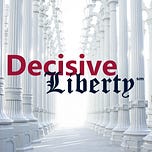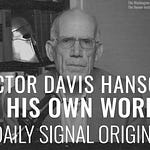NOTE: Starting with this post, any footnotes we use will be generally be pulled from Grokipedia. We have long been an advocate of an internet source that remains apolitical unless politics is involved, then remains true to the Judaeo-Christian principles in our Constitution. Wikipedia cannot compete with those stipulations, Grokidedia - so far - is doing so excellently.
Barbara Boyd explains how Donald Trump’s recent 3-day trip to Asia could reverse 40 years of outsourcing and cultural decay.
She highlights ignored or misrepresented coverage by mainstream media, focusing on the significant trade and defense agreements Trump has made with countries like Japan, South Korea, and Thailand.
These agreements aim to rebuild America’s productive base through advanced manufacturing, critical minerals processing, modern nuclear energy, and streamlined defense strategies.
Boyd also discusses a renewed Monroe Doctrine1 and Trump’s approach to ending international conflicts, emphasizing a strategic shift towards fortifying the Western hemisphere and fostering economic revival.
Chapters
00:00 Intro
02:07 Trump’s Asian Triumph - Reversing the Great Looting
06:32 The New Monroe Doctrine - Homeland First, Hemisphere Next
Snapshots and Notes
President Trump’s Tariff Policies Using the Trump Doctrine
Trade agreements in the 1st of 3 days were made with
Australia
Malaysia
Cambodia
Vietnam
Thailand
Also, a trade agreement with Brazil for rare-earths was established as well as a trade agreement with Japan for the same - the U.S. needs to re-establish itself as a rare-earth independent.
Bill Clinton is responsible for making us dependent upon rare-earths from China, Africa and other countries during the 1990s.
Japan is a leading world force leader in the development of fusion energy and advanced nuclear technology.
They will be assisting the U.S. in the construction of modern nuclear plants and small nuclear reactors in conjunction with Westinghouse2, GE Vernova and Hitachi3.
This will lead to stabilizing our energy grid which in turn will assist in rebuild U.S. ship production, with South Korea, 2nd in global ship building technology, assisting as well.
This jump start of our manufacturing and advanced technology base - following and further advancing President Trump’s international production and building policies that are obliterating the finance and investment and destroying the outsourcing to China policies of the Democrat party (Carter, Clinton, Obama, and to an extent G.W. Bush) of the past several decades.
President Trump has a bag of offerings for Xi Jinping so China is not left out in the dust - what is in that bag will be known later today and early tomorrow after they meet in South Korea (notice they are not meeting in China - curious?)
All this is further exposing the past strategies of the City of London4 - quite sure King Charles is trying to stop the hemorrhaging from the British Empire but President Trump never advertises his strategies, a lesson given in The Art of War by Sun Tzu as well as explained in his book The Art of the Deal, published in 1987.
The New Monroe Doctrine
This has flipped the Dems policies 180 degrees - homeland first, hemisphere next - deemphasizes Europe, Russia, Middle East, and China, popping the British Empire Elites and the City of London’s balloon and leverage.
President Trump has shifted all government policies and actions away from the above and focused them on
domestic terrorists
illegal immigrants and foreign criminals Biden let walk across our borders
freezing then dismantling those who are financing the Democrat party
waging war on the narco states, drug cartels, and internal narco cities
offering better trade deals to the Asian countries, especially China
This leaves Russia and Ukraine, Israel and Islam terrorists to address…
Next week President Trump meets with Hungarian President Orban in Washington, D.C. - this leaves the Budapest Peace Summit with the U.S., Russia, and Ukraine delayed, not cancelled.
The Budapest Peace Summit will have to flip the E.U. from its persistence in forever-wars to focusing on production and building instead.
The trip to Asia was a full blown exercise of The Trump doctrine: peace through strength, production, and building.
The Monroe Doctrine was a foundational United States foreign policy principle enunciated by President James Monroe on December 2, 1823, in his 7th annual message to Congress, asserting that the American continents were no longer subjects for future European colonization or control and warning against any interference by European powers in the independent nations of the Western Hemisphere.
Principally drafted by Secretary of State John Quincy Adams, the doctrine emerged amid Latin American independence movements from Spanish and Portuguese rule, coupled with fears of Russian expansionism along the Pacific Northwest and potential Holy Alliance efforts to restore monarchical dominance in the Americas.
At its core, the doctrine delineated separate spheres of influence: the United States pledged non-interference in existing European colonies or internal European affairs, while declaring opposition to the extension of European political systems - such as monarchism or alliances like the Holy Alliance - to the Americas, framing the region as a zone of republican self-determination under implicit U.S. oversight.
This policy reflected early American strategic priorities of hemispheric defense and commercial expansion without entanglement in Old World conflicts, though the young republic lacked the military power to enforce it immediately against major powers.
Over time, the doctrine evolved from a largely declarative stance into a justification for U.S. interventions, notably through the Roosevelt Corollary of 1904, which asserted a U.S. right to act as an “international police power” in Latin America to preempt European involvement, leading to military actions in countries like Venezuela, Haiti, and the Dominican Republic.
Such expansions marked a shift toward assertive hemispheric hegemony, sparking controversies over sovereignty violations and economic dominance, as the original non-interventionist intent was repurposed to counter perceived instability or debt defaults that might invite foreign creditors.
The doctrine’s legacy endures as a symbol of American exceptionalism in foreign policy, influencing responses to 20th-century threats like Nazi incursions but also critiqued for enabling unilateralism amid power asymmetries.
Sources
Westinghouse Electric Company is an American engineering and manufacturing firm specializing in nuclear power generation technology, founded on January 8, 1886, by George Westinghouse to commercialize innovations in alternating current (AC) electricity distribution and related electrical equipment.
The company licensed key AC patents from Nikola Tesla, enabling it to illuminate the 1893 World’s Columbian Exposition in Chicago with AC power and to construct the world’s first large-scale AC hydroelectric plant at Niagara Falls in 1895, which transmitted power over 20 miles and decisively advanced AC over direct current for long-distance transmission.
Pivoting to atomic energy in the mid-20th century, Westinghouse supplied the core design and components for the Shipping port Atomic Power Station, the first full-scale commercial pressurized water reactor (PWR) operational in 1957, laying the groundwork for PWR technology that underpins approximately half of the global fleet of 430 operating nuclear reactors with a combined capacity exceeding 370,000 megawatts electrical.
The firm expanded into diverse sectors including turbines, generators, and broadcasting before refocusing on nuclear services and fuel amid industry shifts.
In 2017, Westinghouse filed for bankruptcy protection primarily due to multi-billion-dollar cost overruns on the Vogtle and Virgil C. Summer AP1000 reactor projects in the United States, stemming from construction delays, regulatory changes, and supply chain issues rather than design flaws in the inherently safe Gen III+ technology.
Acquired by a Brookfield Business Partners-led consortium in 2018 with participation from Cameco, the restructured entity has since stabilized, securing contracts for AP1000 deployments, fuel supply diversification in Europe, and research initiatives as of 2025, maintaining its position as a leading provider of nuclear fuel, services, and advanced reactor solutions amid renewed global interest in carbon-free base-load power.
sources
GE Vernova Hitachi Nuclear Energy is a strategic alliance established in 2007 between GE Vernova and Hitachi, Ltd., specializing in the design, manufacturing, and servicing of boiling water reactors (BWRs), nuclear fuel, and related technologies for carbon-free power generation.
Headquartered in Wilmington, North Carolina, the company combines GE Vernova’s extensive reactor engineering heritage - spanning over 60 years and including the first commercially operated BWR in 1957 - with Hitachi’s expertise in modular construction and heavy machinery to deliver advanced nuclear solutions globally.
The alliance’s portfolio features the BWRX-300, a 300 MWe small modular reactor (SMR) emphasizing passive safety systems, natural circulation cooling, and simplified design for reduced construction costs and faster deployment, with the first unit under construction at Ontario Power Generation’s Darlington site in Canada as of 2025.
It also supports fuel production through Global Nuclear Fuel joint ventures in the United States, Japan, and Spain, alongside services for reactor operations, maintenance, and decommissioning, including contributions to the Fukushima Daiichi cleanup.
Notable advancements include regulatory progress for BWRX-300 deployments, such as the Tennessee Valley Authority’s 2025 construction permit application to the U.S. Nuclear Regulatory Commission, positioning the company as a leader in scalable SMR technology amid growing demand for reliable base-load power.
In 2014, GE Hitachi settled allegations of false statements to regulators regarding components of its Economic Simplified Boiling Water Reactor design by paying a $2.7 million fine, highlighting past scrutiny over design transparency.
sources
https://smractionplan.ca/content/ge-hitachi-nuclear-energy-geh
https://www.gevernova.com/nuclear/carbon-free-power/bwrx-300-small-modular-reactor
The City of London, commonly known as the Square Mile, is the ancient core and primary financial district of London, spanning 1.12 square miles within the larger metropolis.
Founded by the Romans as Londinium around AD 50 following their invasion of Britain in AD 43, it developed into a key trading settlement at the Thames crossing, protected by walls constructed circa AD 200 using 85,000 tonnes of ragstone.
Governed by the City of London Corporation—incorporated around 1189 and the oldest local authority in the UK, predating Parliament—it maintains a distinct municipal autonomy with an annually elected Lord Mayor, its own police force, and ceremonial institutions like the livery companies dating to medieval guilds such as the Weavers’ chartered in 1155.
With a resident population of approximately 8,600, the City hosts over 678,000 daily workers and attracts millions of visitors, underscoring its role as a global economic powerhouse generating £109 billion in annual output and accounting for one in five UK financial services jobs.
Home to the Bank of England since 1694 and the London Stock Exchange formalized in 1801, it solidified as the world’s preeminent international financial center, retaining the top ranking in benchmarks for five consecutive years through 2025 due to its concentration of banking, insurance, and professional services.
This economic primacy stems from historical deregulation, such as the 1979 “Big Bang” reforms that dismantled fixed commissions and opened markets to foreign firms, alongside enduring legal privileges from royal charters confirming ancient customs.
The City’s defining characteristics include its sui generis status (“of its own kind” or “in a class of its own”) outside the Greater London Authority’s full oversight, preserving business-influenced voting in local elections - a remnant of medieval franchise extensions to guilds and freemen - and a focus on ceremonial promotion of trade, as embodied in the Lord Mayor’s Show since the 13th century.
While its compact bounds enclose landmarks like St. Paul’s Cathedral and the Guildhall, the area has endured pivotal events such as the Great Fire of 1666, which razed 13,200 houses and spurred Wren’s reconstructions, reinforcing its resilience as a hub of commerce amid recurrent challenges from plagues, wars, and modern financial scandals.
This blend of antiquity and modernity positions the City as a causal engine of UK prosperity, though its insulated governance has drawn scrutiny for potentially prioritizing financial interests over broader democratic accountability.
sources
https://www.cityoflondon.gov.uk/about-us/about-the-city-of-london-corporation/our-role-in-london
https://www.cityoflondon.gov.uk/things-to-do/history-and-heritage/city-history
https://www.thecityuk.com/our-work/key-facts-about-the-uk-as-an-international-financial-centre-2024/
https://www.investopedia.com/how-london-became-the-world-s-financial-hub-4589324













